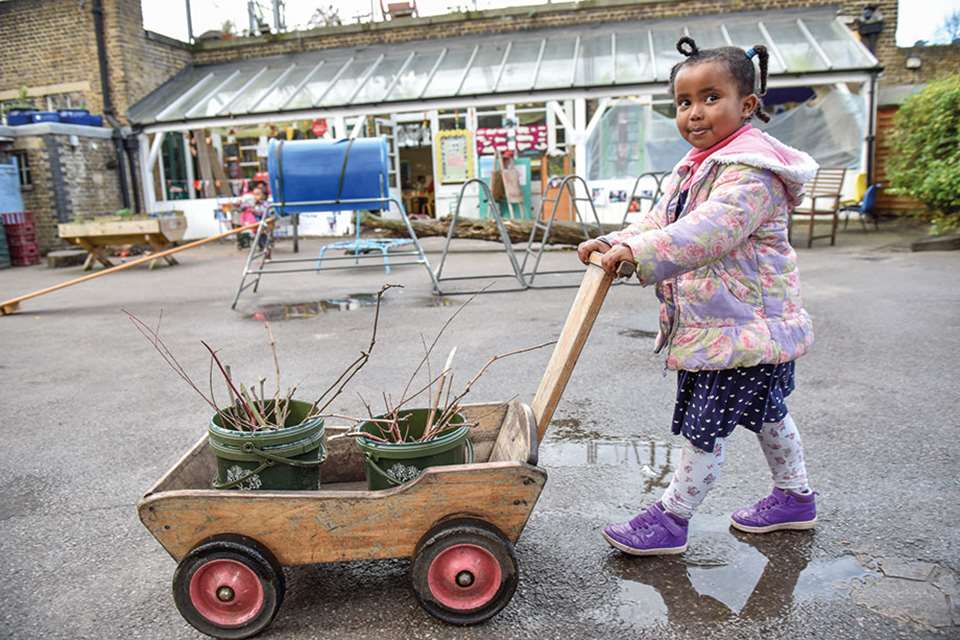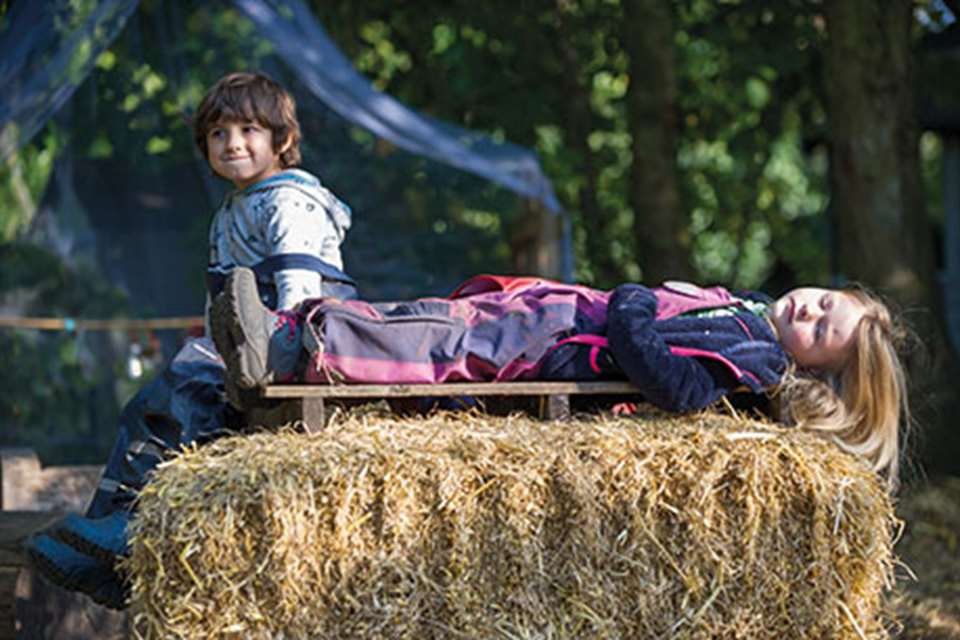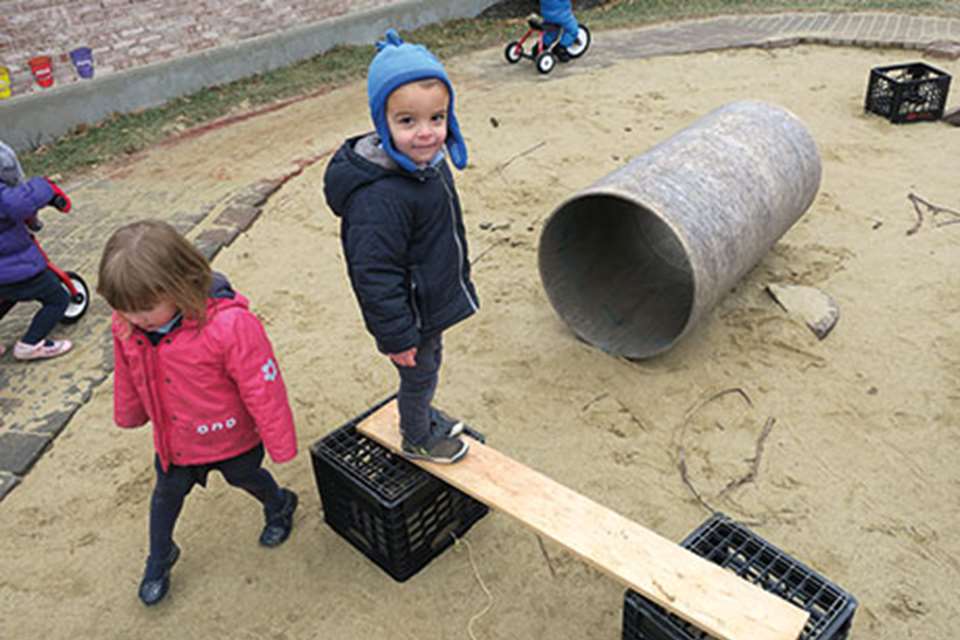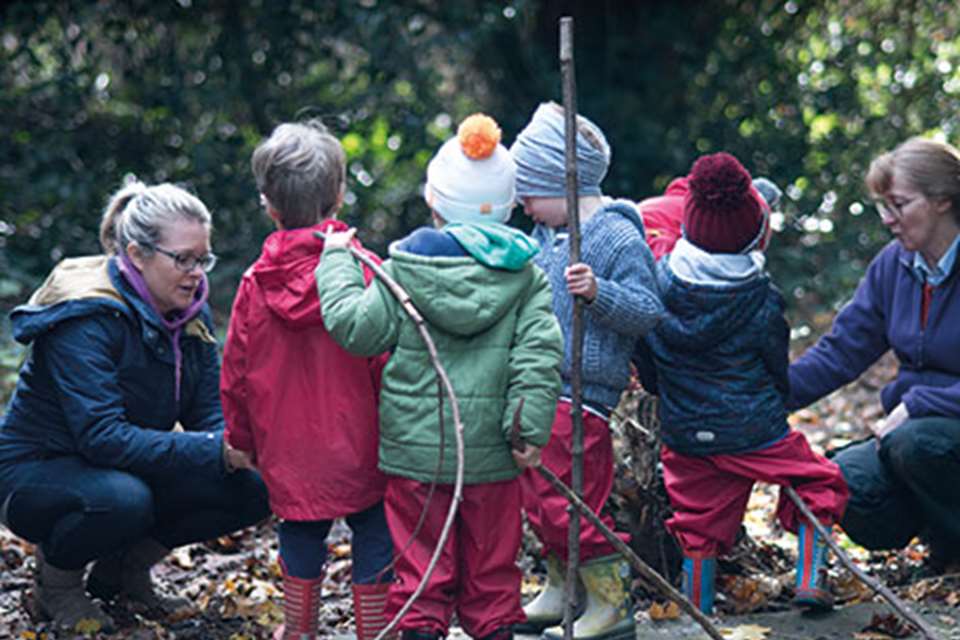Outdoors - Ground work
Nicole Weinstein
Monday, May 14, 2018
The natural environment is benefiting children with sensory processing problems at Merseyside’s first outdoor nursery, explains Nicole Weinstein
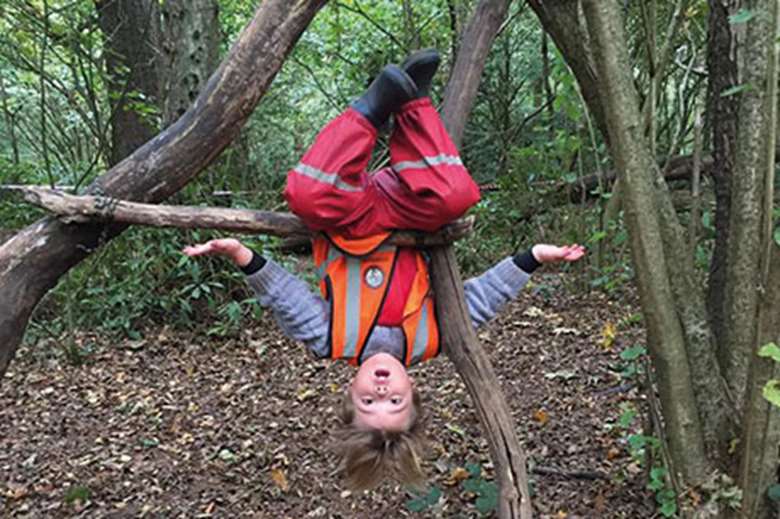
Contact with nature is having a profound impact on children with additional needs at Nurture to Nature outdoor nursery in Croxteth Park, central Liverpool. Without the noises and visual distractions of modern-day living, the symptoms of children with sensory processing disorder (SPD) are ‘dampened down and, in some cases, non-existent’, according to managing director Julie White.
A third of the intake at the 15-place nursery, which is situated in 300 square metres of old deciduous woodland, have additional needs, with many affected by SPD.
The disorder, which is most commonly associated with autism and epilepsy, affects a child’s ability to receive and respond to sensory information. As well as relating to the five senses of sound, sight, hearing, touch and taste, sensory processing also relates to our vestibular and proprioceptive systems, which regulate our sense of balance.
Among the children attending the setting and affected by SPD is a child with autistic spectrum disorder, a child with epilepsy who is fed through a gastrostomy tube, and a child with pica, an eating disorder that causes a child to want to eat inedible objects (see case study).
Before 2016, there were no children with additional needs at the setting. But when the new intake arrived, staff faced the ‘huge challenge’ of learning how to support children with a range of behaviours.
‘This was not only a steep learning curve for us, but one that shaped our whole approach to delivery,’ says Miss White. ‘It was during our training in sensory processing disorder that we began to reframe our thinking and look at the needs of the child and determine how the environment could help meet their individual needs.’
Miss White says securing the sensory foundational system (tactile, vestibular and proprioception skills) is crucial to a child’s holistic development. ‘The sensory foundational systems must be met so that cognitive learning can take place. If these areas are neglected, it will result in developmental delay, problems with behaviour and lower levels of attainment.
‘Nature has provided us with everything we need to support the development of children.’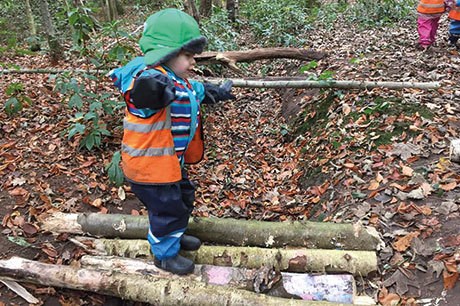
DAY TO DAY
During the morning session, children are actively encouraged to engage in physical play. ‘It’s completely child-led but we assess the children’s individual needs and tailor the sessions to meet their needs,’ Miss White says.
For example, if a child with SPD arrives with particularly high energy, practitioners encourage them to run around, climb and crawl through bushes and drag large logs, and give the children bear hugs.
‘All these strategies meet their proprioceptive needs and will lower their energy levels,’ explains Miss White. ‘Similarly, we have a child with particularly low energy levels in the morning, so we will rock him in the hammock and encourage him to use the rope swings. The swinging back and forth and swinging motion help meet his vestibular needs and rejuvenate him.’
Challenging behaviour, often an off-shoot of an unmet sensory need or an overload of the senses, has been dramatically reduced because of these strategies, says Miss White. ‘If children have not had this stimulation first thing and their sensory needs have not been met, then as the day progresses they internalise their stress, which builds and ultimately results in challenging behaviour.’
SENSORY INTEGRATION
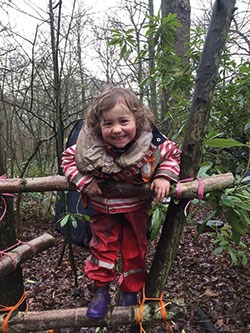 The outdoor environment already supports children’s sensory development in a natural way. ‘Even simple things like walking through the woodland, navigating the undulating ground, is meeting a child’s need for vestibular input, which in turn is helping calm the body and having a positive impact on behaviour,’ explains Miss White.
The outdoor environment already supports children’s sensory development in a natural way. ‘Even simple things like walking through the woodland, navigating the undulating ground, is meeting a child’s need for vestibular input, which in turn is helping calm the body and having a positive impact on behaviour,’ explains Miss White.
But to further stimulate the central nervous system, Nurture to Nature has introduced a variety of activities and resources to support gross motor development and stimulate the senses. These include:
a wobble log – this is a piece of wood as thick as an upper arm, tied between two trees. Holes are drilled in each end of the log and the rope is placed through the holes and attached to the trees. Another rope is placed above for the children to hold onto. When children climb onto the wobble log they have to use their core strength to side-step across the log to reach the other end. This motion supports the vestibular system.
logs to roll on – practitioners encourage the child to put their belly on the log and roll on it while moving their arms forward and ending up in a plank position with their feet underneath the log. This helps to provide proprioceptive input and build their upper-arm strength.
rope swings – the nursery attaches a rope to a tree and ties a knot in the end of it so that children can pull themselves onto it to sit down and swing around and spin in a rocking motion, to support the vestibular system.
barefoot walking – the practitioners ask the children to fill a cleared space, bordered with logs, with materials such as leaf litter, mud and bark. Walking barefoot in the space stimulates their senses.
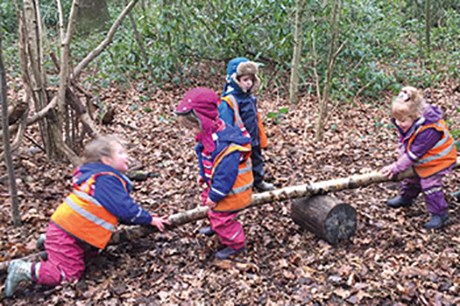
TRAINING
The nursery’s practitioners have undergone extensive training so they can understand and meet the needs of each child – and avert problems. So, a child with epilepsy is rocked gently in a hammock when staff notice signs of tiredness, which could trigger a seizure.
‘Her parents have remarked that she’s never had a fit at the setting because practitioners have the foresight to pre-empt the situation,’ explains Miss White. ‘We are always reflecting on the individual needs of each child and how we adapt our practice to meet those needs.
‘Staff have been on so many training courses and they are so competent in dealing with these additional needs that we are at the point where we don’t need to bring in any additional support.’
Case study: SPD and pica
Toby (name changed), aged three and a half, has sensory processing difficulties and the eating disorder pica. The condition causes a child to eat things at an age when this is developmentally inappropriate and can be due to seeking oral stimulation.
In Toby’s case, he has tried to eat a variety of inedible objects, including Lego pieces and marbles. On one occasion he swallowed magnets at home, which required him to have X-rays to track them as they passed through his body.
At home, Toby tends to run continually back and forth, hit, bite and try to eat objects. However, outdoors at the setting, he likes to run around, and while at first he tried to bite other children, he doesn’t try to eat inedible objects. Through observation and advice from a specialist teacher, practitioners discovered that because his sensory needs are being met, he no longer has the need to digest dangerous objects.
He is constantly moving around on undulating ground; he is climbing – there are a lot of smells and tactile things, so when he is climbing, the tree may be wet or dry; the mud and leaf litter are tactile. All this natural sensory input is supporting his vestibular, proprioceptive and tactile needs and this, in turn, is reducing his need for oral stimulation.
Things are improving at home as well, according to his parents, who have worked with practitioners and external agencies to ensure that he has appropriate resources at home, such as a trampoline and peanut-shaped ball to bounce on, and wobble cushions.
MORE INFORMATION
Pica, www.challengingbehaviour.org.uk/understanding-behaviour/pica-polydipsia-sheet.html
Nurture to Nature staff have received specialist training from Shine Therapy, www.shinetherapyservices.co.uk


